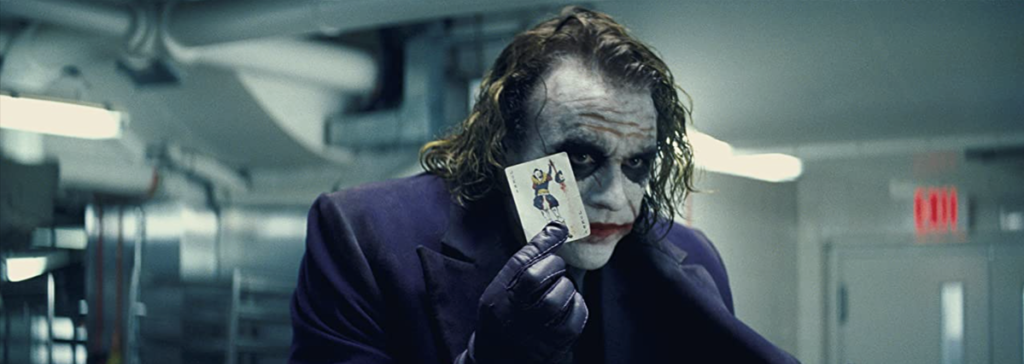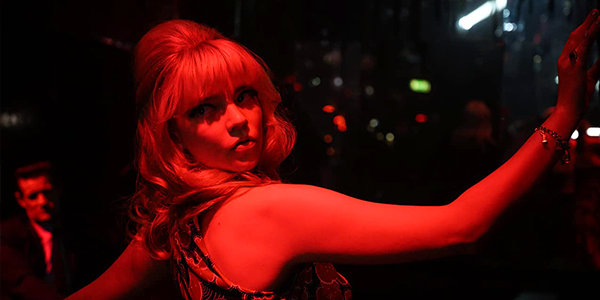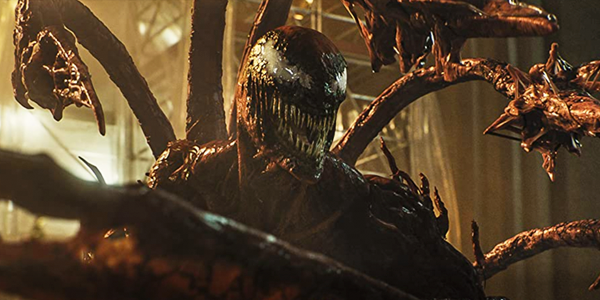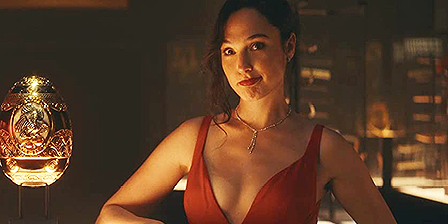recent reviews
Sign up for our monthly newsletter
to stay up to date on Cineluxe
The UHD Blu-rays of Christopher Nolan’s iconic superhero trilogy make these films as vivid as they were when first seen in theaters
by John Sciacca
December 6, 2021
As my daughter Lauryn has gotten older—she just turned 15—it has been wonderful revisiting classic films as a family now that she’s old enough to appreciate— and not be scared by—them. We’re caught up on all the Star Wars films, she’s a huge fan of virtually everything in the Marvel Cinematic Universe (MCU), she loved the six-season journey that was ABC’s Lost, and we’ve sat through the new 4K HDR extended versions of The Hobbit and Rings films. As a parent and movie buff, it’s really great to relive these classics through her eyes, getting a chance to experience them again with someone who is watching for the first time—especially when some of these are movies I’ve previously watched multiple times.
Another great benefit is that many of these films are now receiving 4K HDR makeovers, making it a perfect time to go back and rewatch a favorite in a way you’ve likely never experienced it before. And, as is likely the case with many readers, my entertainment system has progressed by leaps and bounds since I’ve watched these movies years ago, which certainly makes it feel like a completely new experience in many cases.
The latest series of films we watched was Christopher Nolan’s Dark Knight trilogy, which started in 2005 with Batman Begins, followed in 2008 with The Dark Knight, and concluded in 2012 with The Dark Knight Rises.
I remember watching Tim Burton’s Batman in 1989 and loving it. It was hands-down the best Batman we had at the time—especially with the ultra-campy ‘60s Adam West version as our previous touchstone. But, let’s be honest—time hasn’t been as kind to it. And watching it some 40 years later—even with a new 4K HDR transfer and Dolby Atmos sound mix—things like Prince’s soundtrack, the dancing, the goofiness, and even some of the Burton-ness just feel dated.
Prior to watching Nolan’s trilogy, I told Lauryn that beyond being just great superhero movies, these are just great movies, specifically The Dark Knight with Heath Ledger’s fantastic Academy Award-winning portrayal of The Joker, which transcends the superhero genre by exploring depths and boundaries rarely attempted in movies with characters wearing capes.
There are several things Nolan does that elevates this trilogy above others. First, he weighted the cast with fantastic actors. Throughout the three films we have Christian Bale in the double role of Bruce Wayne and Batman, Michael Caine as butler-cum-conscience Alfred, Gary Oldman as Commissioner Jim Gordon, and Morgan Freeman who runs Wayne Enterprises’ Applied Sciences Division as Lucius Fox, anchoring the principal cast. Each of them has won at least one Academy Award and been nominated for multiple—a ton of firepower to build your franchise around. For villains, we get Ken Watanabe, Liam Neeson, Cillian Murphy, Heath Ledger, and Tom Hardy. And that doesn’t even mention the multiple other characters that weave through the story, like Anne Hathaway, Joseph Gordon-Levitt, Marion Cotillard, Nestor Carbonell, Maggie Gyllenhaal, and Aaron Eckart. The films are packed with A-listers and the quality of the acting shows throughout.
Second, Batman has always been the hero most grounded in reality, and Nolan really makes that feel real here. Bale is believable as billionaire playboy Wayne—buying hotels, dating supermodels, and driving Lamborghinis—but he’s also not invincible, and is a complete physical wreck by the third film. But Wayne isn’t alone in his endeavors, and it’s the equally important team of Alfred—who handles many of the logistics and runs things behind the scenes to allow Wayne to keep his secret identity—and Fox, who gives the perfect (and plausible) answer as to how and where Batman gets all those wonderful toys—that really make the story work. Between the three of them, it’s far easier to buy into the action and that Batman would have this tech at his disposal and be the savior Gotham needs.
Third, Nolan manages to walk the style line between Marvel and DC, even before they existed as such. Coming in three years before Iron Man (the first film in the MCU) Batman Begins was the first modern big-budget superhero film, and Nolan set the tone, again choosing to ground it more in reality and shoot with a mentality towards making a great movie instead of just a great superhero movie. Where Marvel’s formula leans towards being light when it needs to, and DC—especially with the Zack Snyder films—tends to go overly dark and somber, Nolan found a way to be serious and mature but still fun. The light moments are far more a well-placed clever comment from Alfred or Lucius than something gratuitously placed for a laugh.
Finally, and perhaps the most important thing, Nolan doesn’t rush things. The shortest film in the trilogy is 140 minutes, with the longest running 165, giving Nolan plenty of time to let things develop and unfold. This is particularly evident in Batman Begins, where we don’t even see Wayne as Batman until an hour into the film. Think about that—for the first 43% of a superhero movie, we don’t even see the superhero. Instead, Nolan takes Wayne and us on a lengthy journey lasting years to get the training needed to believably transform him from a soft socialite into a hard vigilante, while interspersing the history of Gotham and the Wayne family along the way. The same is true with The Dark Knight Rises, where the first 45 minutes pass without a Batman sighting, instead letting us see the toll it has taken on Wayne. Nolan lets the story build, develop, and speak for itself, instead of feeling the insecurity of needing to insert the hero into every scene. And by including the same principal cast throughout the films, we have nearly eight hours to become invested in these characters.
All three films were originally filmed in 35mm but have been remastered for their UltraHD release, and these new transfers are taken from true 4K digital intermediates. As I’ve said before, don’t expect film-to-4K transfers to have the tack-sharp look of modern digital productions, but that doesn’t mean they don’t have a ton of detail, especially on closeups. You can definitely see all the fine lines and wear on Bale’s face, the texture in fabrics, the construction of his vehicles, and both the grit and polish of Gotham.
What makes these transfers really pop, though, is the HDR grading. Much of the action takes place at night or in dark interiors, and the HDR gives us a foundation of deep, solid blacks with which to pop bright highlights, resulting in images that are far more realistic. There is also more headroom to pump highlights into reflections glinting off glass or metal, or the brightness of an explosion, or headlights/sirens during night chases. And when you combine the sharpness, clarity, and detail of 4K with the inky blacks and bright pops of HDR, such as in long exterior shots of Hong Kong or Gotham, you end up with images that are beautiful to behold.
Nolan is fairly well known at this point for his dislike of immersive audio formats like Dolby Atmos, so all three of these films make do with a 5.1-channel DTS HD-Master mix. Fortunately, when routed through the upmixer of a modern processor (DTS: Neural in my case), you get a terrific sense of immersion. While you get some ambient sounds on the streets of Gotham, it’s the big action scenes that really show off your system, with sounds frequently encircling the entire room, including up overhead. Whether it is people under the trippy influence of Scarecrow’s (Murphy) gas, or Batman crushing over things in the Tumbler or flying around in The Bat, or the stadium-filled echo of the young boy (“What a lovely, lovely voice”) singing the National Anthem, the mix delivers.
Explosions, gun shots, and vehicle crashes—of which there are plenty across the three films—also have plenty of authority and weight, with your subwoofers definitely energizing the room to tactile levels. There was one scene where the loud THWACK! of an arrow suddenly slamming into a target made both my wife and daughter jump.
I also happen to love the Hans Zimmer and James Newton Howard scores, especially for The Dark Knight with The Joker’s theme, which has a frantic, crazed quality that drives the tension; and the music definitely gets room to expand across the front channels and overhead. The Dark Knight opens with a bank robbery, and the long drawn out and unsettling string notes inform you something sinister is about to happen.
Dialogue is mostly intelligible, though there were some moments—particularly in the third film with Bane (Hardy) speaking behind a mask—where the combination of music, mayhem, and on-set recorded dialogue made some lines a bit tricky to hear, but certainly nothing like the sonic mess of Nolan’s Interstellar or Tenet.
With his Dark Knight trilogy, Nolan accomplished one of the toughest feats in Hollywood—making a sequel that is better than the original. In fact, The Dark Knight is the fourth highest-rated film on IMDB’s Top 250, behind The Shawshank Redemption, The Godfather, and The Godfather: Part II. And as good as it is, The Dark Knight Returns is arguably better in ways.
This trilogy belongs in any collection, especially now that it has been given the 4K treatment, and if it has been more than a few years since you’ve watched these films, they make for a terrific movie weekend.
Probably the most experienced writer on custom installation in the industry, John Sciacca is co-owner of Custom Theater & Audio in Murrells Inlet, South Carolina, & is known for his writing for such publications as Residential Systems and Sound & Vision. Follow him on Twitter at @SciaccaTweets and at johnsciacca.com.
PICTURE | The HDR grading really makes these 4K transfers pop. With much of the action taking place at night or in dark interiors, HDR provides a foundation of deep, solid blacks with which to pop bright highlights, resulting in images that are far more realistic.
SOUND | Since Christopher Nolan doesn’t like Dolby Atmos, all three films make do with 5.1-channel DTS HD-Master mixes. Fortunately, when routed through the upmixer of a modern processor, you get a terrific sense of immersion.
© 2023 Cineluxe LLC






